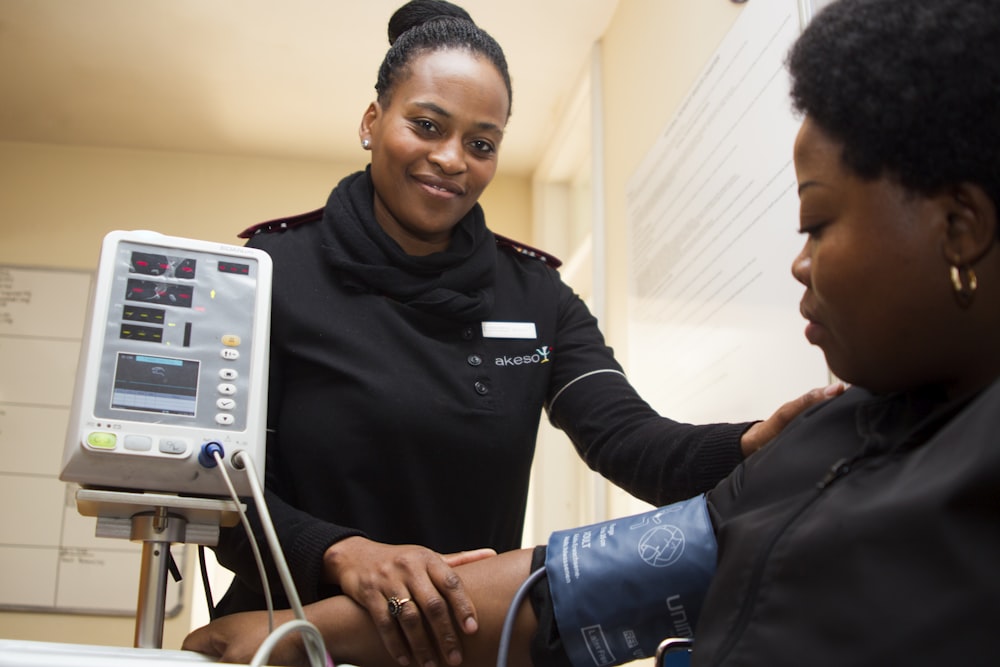
I started my career in geriatrics as a Certified Nursing Assistant (CNA) and was initially confused by these abbreviations. Hopefully this post will provide some clarity on the differences between them.
is, like I mentioned, a Certified Nursing Assistant.
This is a medical professional licensed by the state to work in hospitals, skilled nursing facilities, and home healthcare settings.
They provide assistance with activities of daily living such as bathing, grooming, eating, dressing, and incontinence care. They can also measure vitals (blood pressure, pulse, oxygen saturation, temperature, and pain status). In some states they can pass medications under the supervision of a nurse. In many cases they are the first to report any changes in patient status.

To become certified by the state a CNA must take a course (usually about a semester long) approved by the state, complete clinical hours, and pass the state licensure exam.
In a facility, a CNA can be responsible for 10-20 patients at once (anything more is a recipe for disaster so make sure you ask your employer about patient to staff ratios!). In a home healthcare setting it will be one patient at a time, but they may have several patients per day.
I worked as a CNA for a couple of years while I was going to school and I am very thankful for those experiences because it made me a better nurse overall and gave me a leg up in future career opportunities.
is a Licensed Practical Nurse. LPNs can work in hospitals, home healthcare, schools, doctor’s offices, or jails. I enjoyed my time working as a school nurse the most. All of the kiddos were so stinking cute I wanted to take them home with me!
LPNs are licensed by the state to assess vitals, pass medications, perform wound care, give injections, measure blood sugar, give insulin, and perform head to toe assessments. The LPN cannot take blood, provide blood transfusions, or administer intravenous (IV) medications, unless they have extra on the job training or certification to do so.

To become certified, LPNs usually need to complete prerequisites such as anatomy and physiology and microbiology. Then, they need to complete a program (usually about a year or 2 semesters long), including clinicals, and they need to pass the NCLEX-PN to become licensed by the state.
Some LPNs will be responsible for up to 30 patients at one time in a skilled nursing facility setting. In a school setting they may be responsible for the entire student population or some schools need a one on one LPN to work with a child in a wheelchair that has seizures, for example. In a home health care setting a LPN may only have one patient per day. There are many options for employment. The highest salary will likely be at a nursing home or private doctor’s office, but the most enjoyable is a school or home healthcare setting, from my experience.
is a Registered Nurse. RNs do all of the same things that an LPN can do but they also can take blood samples (phlebotomy), give intravenous (IV) medications, and provide blood transfusions.

This license usually takes 1-2 years to earn, including clinicals, and passing of the state licensure test called the NCLEX-RN. If you have a LPN license already there are also LPN to RN bridge programs that may take a year or less to complete.
RNs work in all of the same settings that LPNs can and, additionally, hospitals. There are not many hospitals that will hire a LPN. The job descriptions are pretty similar though.
is a Bachelor’s in the Science of Nursing. This is a higher degree, but the state licensure and job description is exactly the same as it would be for a RN. The main difference between a BSN and a RN is that some places of employment may look more favorably on a BSN and, in some cases, may pay more for a BSN. Also, a BSN may give you more opportunities for management positions.

In my opinion, it is wise to obtain a RN license first and then do a bridge program to a BSN.
This process usually will take 3 years instead of the typical 4 year pathway straight to a BSN and may be a little more affordable. Plus you can work while you go to school and some places of employment may offer tuition reimbursement!
is a Nurse Practitioner. This is equivalent to a master’s degree in nursing. These professionals are licensed by the state to prescribe medications, order diagnostic tests, interpret diagnostic tests, diagnose certain diseases or conditions, and provide treatments in addition to all of the skills that an RN can perform.
NPs can work in hospitals, doctor’s offices, and independently in their own clinics. They can work with any population. NPs may also teach nursing students or work in research.

I hope this post has cleared up any confusion you may have about all of the different pathways and skill levels in the field of nursing. I am glad that I got my LPN license instead of jumping straight to a RN or BSN because it showed me what this field was like and I was able to spend less money on my degree. Let me know which pathway will be best suited for your situation!